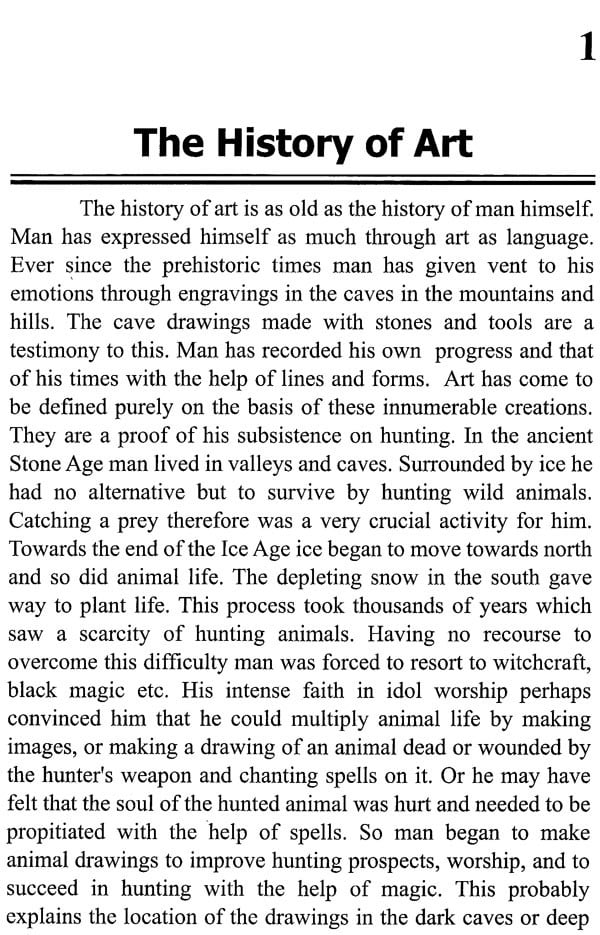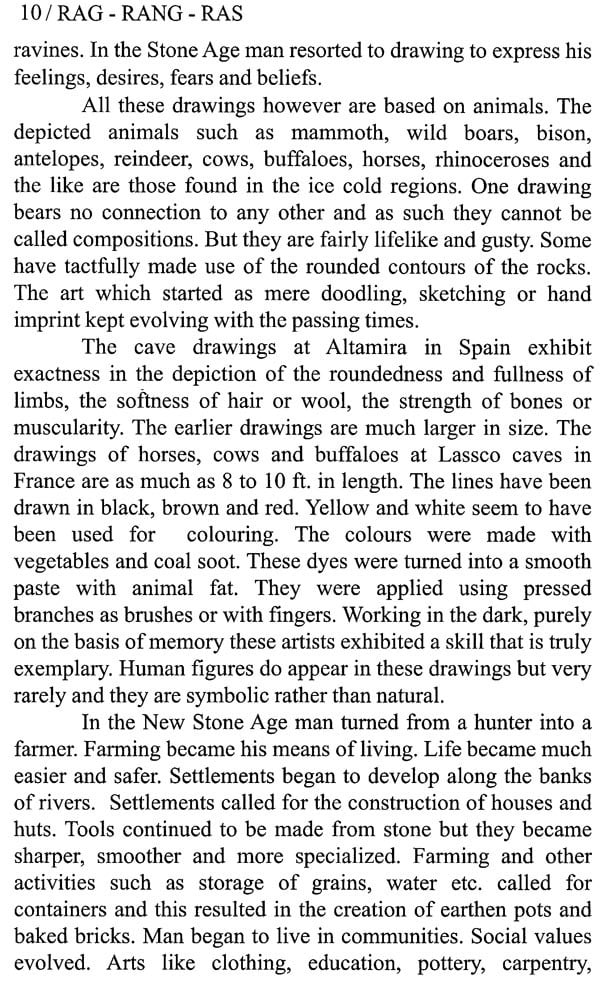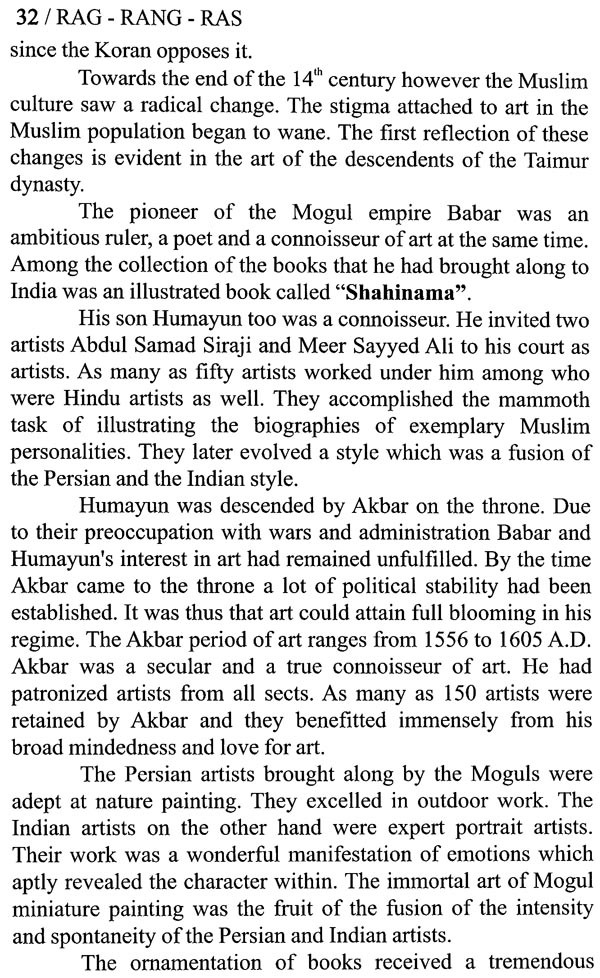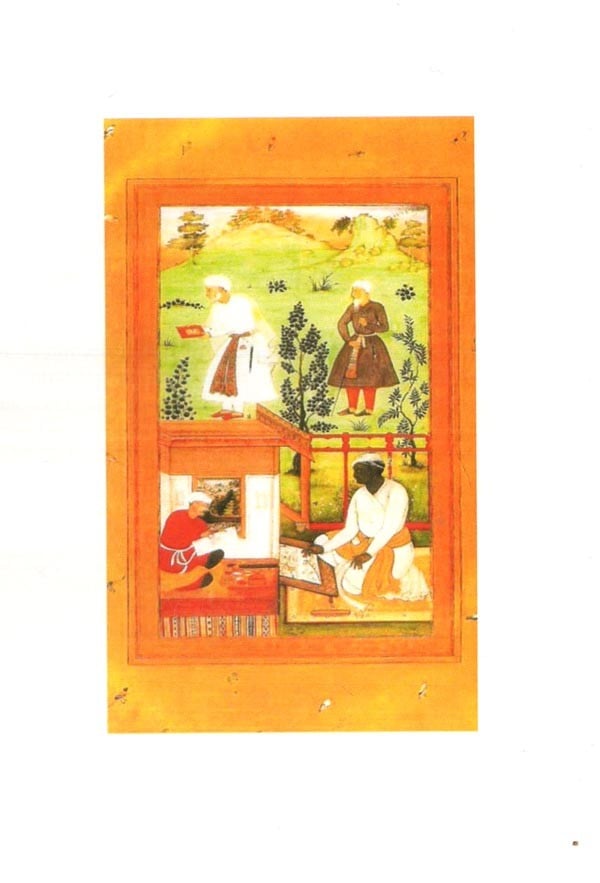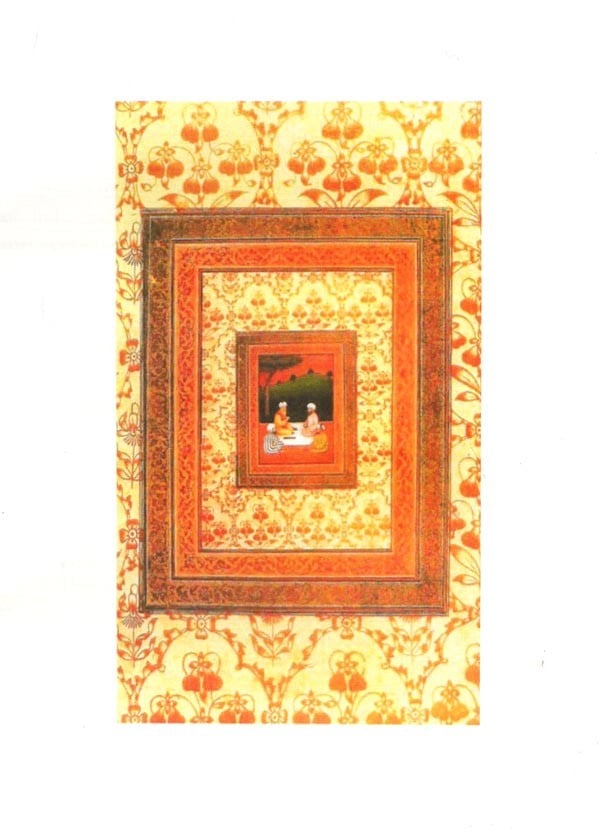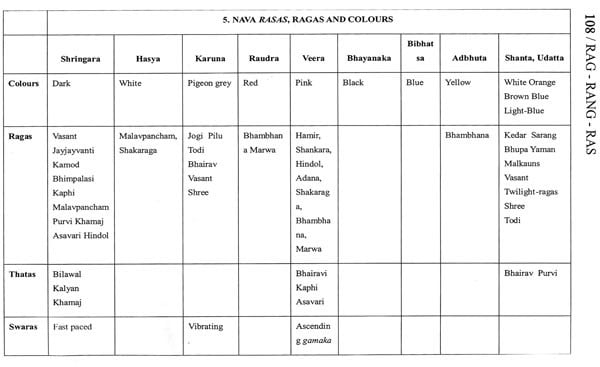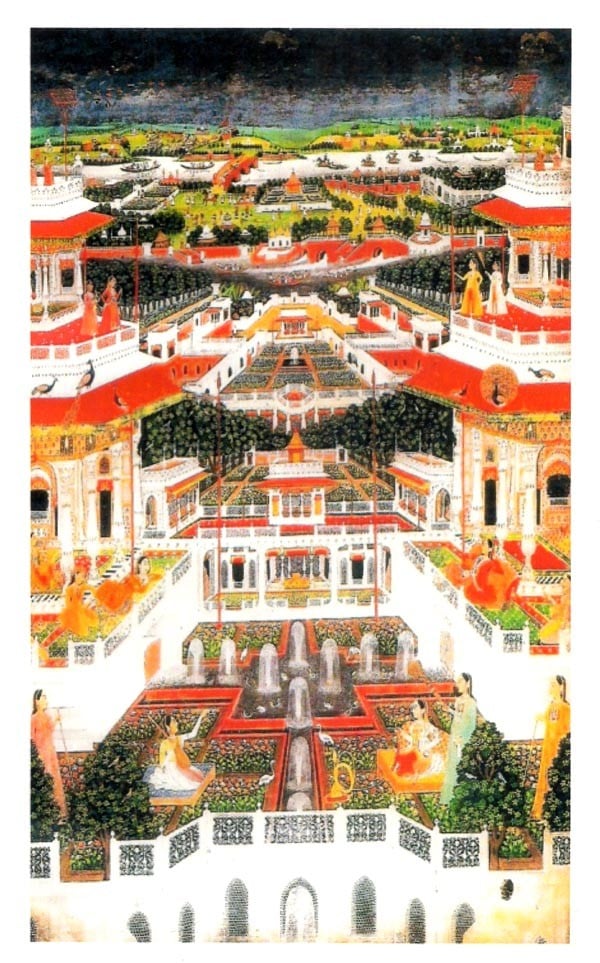
Rag- Rang- Ras
Book Specification
| Item Code: | UAB482 |
| Author: | Alka V. Kade |
| Publisher: | Divya Distributers, Kanpur |
| Language: | English |
| Edition: | 2016 |
| ISBN: | 9789380913223 |
| Pages: | 112 (Throughout Color Illustrations) |
| Cover: | HARDCOVER |
| Other Details | 9.00 X 6.00 inches |
| Weight | 400 gm |
Book Description
All the Indian fine arts boast of a rich history. Painting is a spatial art while music is chronological. Both these arts communicate without words. There has been no standardisation of the nature of a raga yet it has been acknowledged universally that ragas are capable of evoking emotions. Similarly the works of various painters differ due to topical considerations like costumes, lifestyle, dwellings, jewellery, bird and animal life, flora and fauna and even facial features. Yet they are successful in transmuting feelings.
The Ragamala Paintings belong to the 15th and 16th century but they are the fruit of a rich legacy. In spite of having been produced under the Muslim regime they have retained their uniqueness. They are a unique combination of painting, poetry and music. Many of the paintings contain a shloka or a verse about the raga portrayed in the painting. As we all know effective recitation of poetry can conjure up a graphic image of the theme. The Ragamala paintings have done just that. The paintings are a visualisation of the raga-ragini system prevalent in those times. These paintings were done in the miniature style that was in vogue from the 15th to the 19th century. The pursuit of music was a socially approved activity. Hence paintings based on the ragas were bound to arouse interest. The paintings perhaps do not perhaps score well on the counts of line, form and composition but they do succeed in evoking feelings. These paintings also hold a mirror to the social life of those times.
It was obvious that the painters of Ragamala Paintings would follow the norms of ragas as prevalent in their times. The artists were unfortunately ignorant about music and the practitioners of music were not necessarily academicians. The paintings were manifestations of ragas as visualised by the poets or musicians.
It was out of a curiosity whether the feelings evoked by the colour scheme of the paintings are congruent with those evoked by the ragas themselves that I ventured into a study of the Ragamala miniature paintings. A study of the ancient texts and the views of musicians, painters and connoisseurs of music and painting gave me an insight into this field. Not being a professional musician I had certain limitations. I am indebted to my colleague Dr. Shobha Gurjar for her help in that regard. I would also like to take this opportunity to thank my other colleagues at S. N. D.T. Arts & Commerce College, Pune, my guide Dr. Mukund Kelkar, renowned artists like Pt. Anis and Nafis Dagar, Smt. Anuradha Marathe in the field of music, as also painters like Ravi Paranjape, Milind Phadke and my family members without whose guidance, support and help this project would have remained an impossible dream.
Apart from establishing the strong correlation between music and painting I do hope that my book can inspire further research in the affiliated areas. Accepting the correlation between various fine arts one can take up a comparative study of the modern art and modern bandishes or about the rasas with the colour composition in modern art. Another activity would be making paintings on folk music. It is as if the treasure trove of fine arts has a lot to be explored yet.
Book's Contents and Sample Pages

